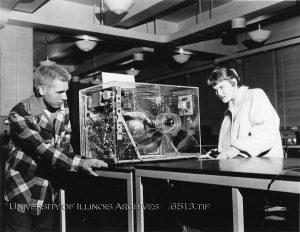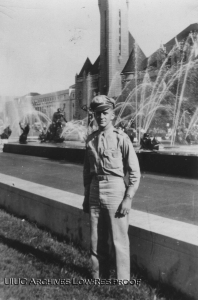When Joseph Tykosinki-Tykociner arrived at the University of Illinois in 1921, little did the itinerant electrical engineer know that his dream of inventing sound motion pictures would reach fruition less than a year later. Tykociner, like many enterprising inventors of the early 20th century, developed his ideas during an era in which the academic discipline of engineering became firmly established—the creation of which bridged the gap between the roles of the “inventor” and the “scientist.” Indeed, as a discipline, electrical engineering was only a few decades old. Founded in 1891, the Department of Electrical Engineering (now the Department of Electrical and Computer Engineering) at the University of Illinois was initially a unit within the Department of Physics. President Andrew S. Draper separated the two departments in 1895, wishing to develop electrical engineering into a formidable department that could respond to increasing demands for individuals trained in the “principles of electricity, as it applied in the design, production, and operation of such electrical equipment as telephone and telegraph apparatus, power plants, and city and industrial systems.”[1] Continue reading “Joseph Tykociner and the “Talking Film”” →

